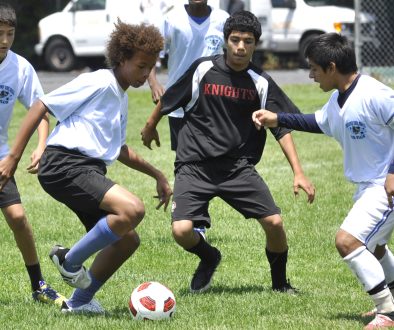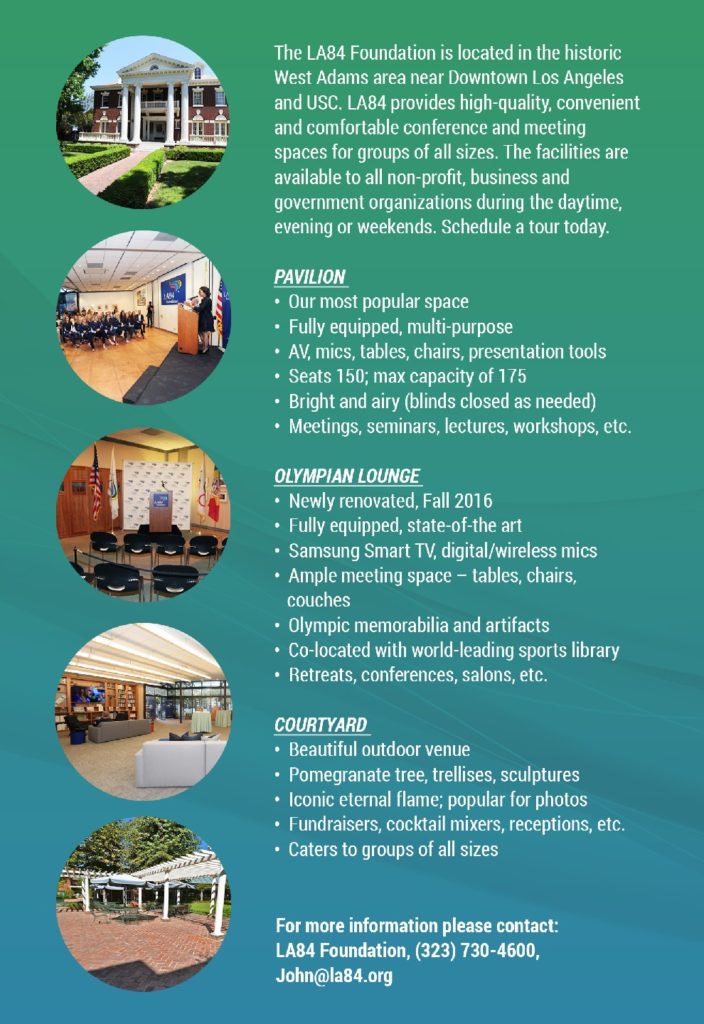LA84 Summit Panel Recap: Equity in Play
Children in youth sports deserve the right to play and a place to do it, but the gap between hope and action is one that too often goes unfilled. At one of the 2016 LA84 Summit breakout sessions, four panelists addressed the ongoing issues, potential solutions, and advice for collaboration when it comes to giving all kids the opportunity to benefit through sport.
Problems & Solutions
- LA84 survey of youth sports participation in LA County reports that kids from lowest-income households play the least.
- Compared to parks nationally, LA County parks provide relatively few sports spaces.
- LA84 has invested $225 million in under-resourced communities, reaching 3 million youth across eight counties.
- LA84 has invested $20 million in sports facility construction and improvement, including public park space.
- LA84 pioneered research and low-cost solutions to knee injuries in youth sports.
Equity in Play: Safety, Space & Money Panelists
- Dr. Keith Feder, Co-founder, Team to Win, Director, West Coast Sports Medicine Foundation
- Ed Foster-Simeon, President & CEO, U.S. Soccer Foundation
- Keith Johnson, Executive Director, Falcons Youth and Family Services
- Brenda Villa, Founder, Project 2020, Coach, Olympian, Water Polo
Moderator: Tony Brown, Executive Director, Heart of Los Angeles
To Share is Human
While the four panelists’ viewpoints ranged from topic to topic, their thoughts aligned when it came to a major obstacle facing youth sports. “We need to learn how to share,” Villa said, referring in this case to the division between club and recreational sports and the pool facilities each side uses. “It should be more about getting more kids swimming and in the pool than growing a specific program. The more kids I get in, the more who will be water-safe.’
PANEL RECAP: Playing Smart: Solutions to the Youth Sports Dropout Problem
For Johnson, sharing means collaboration between youth sports teams and leagues and the organizations who run everything else needed for sport to be played. “We need to work with the city to make renting fields more affordable, while getting help to pay the cost for medics and referees that these families often can’t pay,” he said.
Availability is Half the Battle
“If it’s more than a 10-minute walk away, it is too far,” Foster-Simeon said about the issue of safety and space in youth sports. “Not every neighborhood has moms with minivans who can take kids any place.” LA84’s new survey of youth sports participation in Los Angeles County shows that LA has only four soccer fields per 100,000 residents, less than 25 percent of the national average.

Building new fields and complexes can be difficult for many reasons, so a major focus also needs to be on rebuilding facilities in place that might have been worn down over the years. “It’s too easy for coaches and mentors to identify pools that will attract athletes, but we need to make something grow organically in the community,” Villa added.
PANEL RECAP: Elevating the Field: Maximizing Impact through Collaboration
For Johnson, collaboration is also needed across sports. While divvying up new baseball and soccer fields can boost participation in those sports, this dividing can fence off the separate fields and eliminate football fields in the process. “The sports do not matter,” Foster-Simeon said, echoing Johnson’s plea for working together. “If we get out of our silos, we’ll make a bigger difference.”
Focus on Sports’ Impact Beyond the Field
While there’s no doubt sports changes lives beyond the field of play, the panelists had tangible reasons on youth sports’ benefits and why funding needs to be increased for programs in low-income and low-opportunity communities:
Foster-Simeon: “Sports impacts on not just a physical level, but a social level. It’s creating a community where families come together. You’re cooking together and you’re learning about your neighbors. And for the kids, the real value for them in translatable skills that go right into the workplace: Teamwork, discipline, how to lead, when to follow, and responsibility to others”
Johnson re-emphasized the notion of building a community through sport: “Why don’t we build up what’s already there?” Johnson asked. “I live in my city. Our coaches live in our city. Our parents live, work and play in our city, and that’s where investment needs to take place.”
Dr. Feder: “We see kids who have insurance, but it’ll take them two months to get an MRI. There needs to be money for athletic trainers in high school, because that’s a health care extender. Our athletic trainers often become the primary care doctors for kids, from nutrition to check-ups.
See more from the Summit and the latest from LA84 here.





